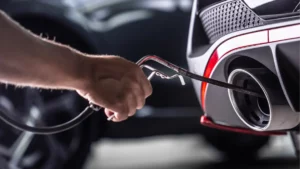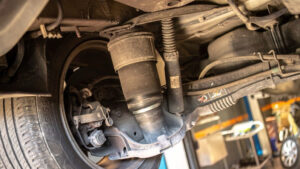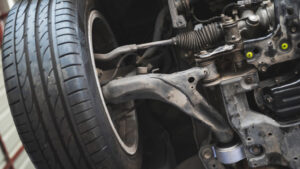Most people don’t give their car’s alignment a second thought. They drive their vehicle around for years and never have to worry about the wheels being out of line.
But if you notice that your car is pulling in one direction or that your tires wear unevenly, then it may be time to think about how long a tire alignment takes.
Alignments are important because they affect how your car handles, whether it feels like it’s drifting or if you’re getting stuck on bumps in the road. Alignments can tell a lot about your suspension & almost a start of a domino affect of your vehicle!
A bad set of wheels can also lead to uneven tread wear and poor gas mileage due to an increase in drag caused by an unbalanced tire (which happens when one side of the wheel is heavier than the other).
That makes regular alignments essential for keeping your vehicle running as smoothly as possible!
What Is A Tire Alignment?
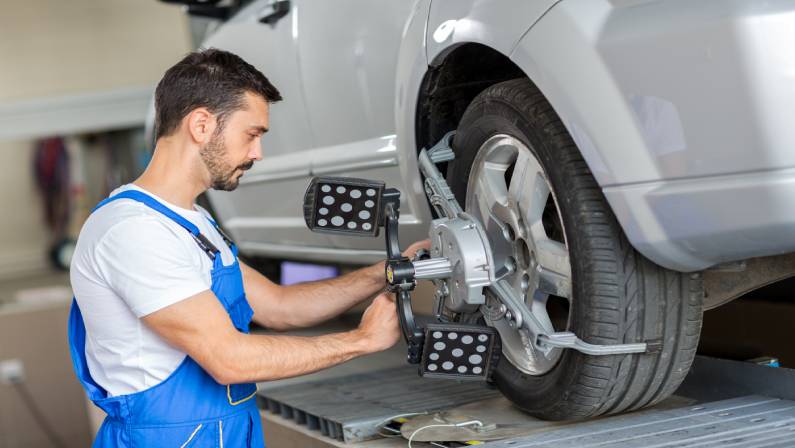
A tire alignment is a service that adjusts the angles of your car’s tires. When you’re driving, your car’s wheels turn in response to the movement of its suspension system. If your wheel is bent or damaged, it might not be able to rotate properly and will cause a misalignment.
If you have a worn suspension system or if it has been damaged, this can also cause misalignment. This can make driving difficult because it may feel like your vehicle isn’t steering correctly or responding quickly enough when you try to turn into an intersection or make sharp turns at high speeds on highways and freeways.
Is Wheel Alignment Necessary?
Many people think that tire alignment is unnecessary, but it’s actually pretty important. In fact, you can save money on your car maintenance by getting your tires aligned regularly.
Do All Cars Have The Same Alignment?
There are many different types of vehicles on the road, each with its own unique design. Different cars have different alignments, and the alignment of your vehicle depends on its intended purpose. You may be wondering which tires have the most effect on the alignment of a car.
The size of your car is important in determining how it’s aligned. Larger cars are heavier than smaller ones, so they need more weight on their rear tires to prevent them from pulling to one side while driving around corners at high speeds.
How Do I Know I Need An Alignment?
Alignment is a process that ensures your tires are properly aligned, with the wheels parallel to each other and pointing straight ahead. If your alignment is off, you may notice one or more of these issues:
Sharp Pulling In One Direction
If you notice that your car is pulling to one side, it may be time for an alignment. If you turn the steering wheel in a straight line and notice the car moving significantly, especially in one direction, there’s a good chance that your tires need to be realigned.
You can also test by driving over a kerb or bump. If your car pulls to one side when driving over it, that’s another sign that you need an alignment.
Slight Pulling
If your car is pulling slightly but not enough for an experienced driver to notice, then chances are you don’t need an alignment yet. However, if the pulling becomes more pronounced or starts happening more often than usual, an alignment is likely needed.
Steering Wheel Vibration
Another sign of needing an alignment is if the steering wheel vibrates while driving on a smooth surface. This indicates an issue with one of your tires or wheels that needs to be fixed before it causes more damage or leads to other issues, such as tire wear patterns shifting over time due to friction between parts rubbing against each other too much (which creates heat buildup).
Crooked Steering Wheel
If you find that your steering wheel is crooked, this could also mean that one of your tires is out of alignment. This can cause uneven wear on your tires, which reduces fuel efficiency and can even be dangerous for you and other drivers on the road as well.
Uneven Tire Wear
When there is improper tire wear on one side of the vehicle compared to another, this could also indicate an issue with the alignment of the vehicle’s wheels or suspension system.
How Long Does An Alignment Take?
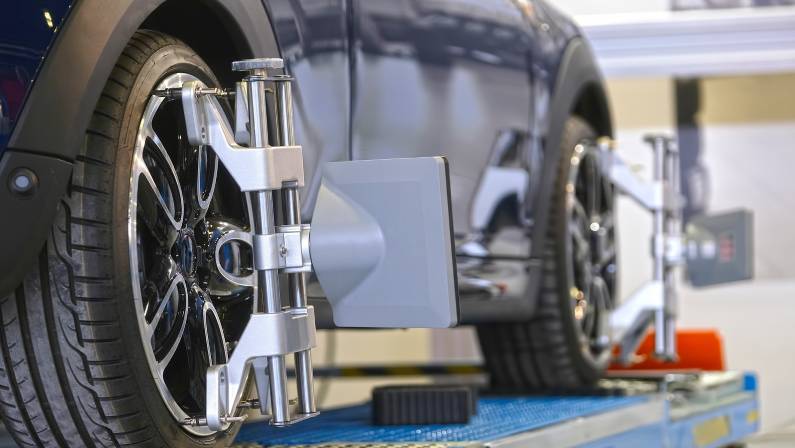
For how long does it take to do an alignment, the length of an alignment varies depending on the type of vehicle being aligned.
Four-Wheel Alignment
The average four-wheel alignment takes about one hour to complete.
Two-Wheel Alignment
This type of alignment can take anywhere from 15 minutes to an hour, depending on the size and complexity of your vehicle.
‘toe-N-Go’ Alignments
These usually take about 15 minutes.
Factors That Affect Wheel Alignment Time
The time it takes to perform a wheel alignment can vary greatly depending on several factors.
Too Much Wear And Tear
If your tires have worn down unevenly or if their tread has become uneven due to excessive wear and tear, then they will likely need more time during the alignment process than if they were still in good condition. A technician may also recommend replacing these tires before proceeding with the alignment process.
Damaged Suspension System
If your suspension system has been damaged by hitting a pothole or curb too hard, then it needs to be repaired before performing any work on other components like wheels or tires.
Damaged Steering Bushing
If your steering system has been damaged in any way, it can take longer for it to be fixed. This is because the technician will have to replace or repair parts of the system before performing an alignment on your vehicle.
Damaged Track Rods
If one or both of your track rods are damaged, you will likely need to replace them before having an alignment performed on your vehicle.
How Often Should I Get A Tire Alignment?
How often should you get an alignment depends on how often you drive and the condition of your tires. For example, if you drive in bad weather frequently and/or have performance-oriented tires, then you may want to get alignments more frequently than someone who drives their car mainly on the highway.
In general, however, it is recommended that drivers get their tires aligned every 5,000 miles. If this isn’t possible due to time or financial constraints (e.g., working full time), then at least try to align them every 10-12 months.
What Causes Wheel Misalignments?
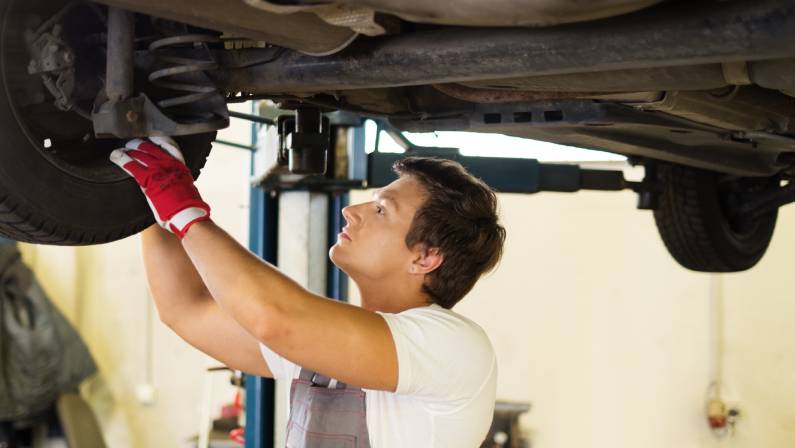
The following factors can cause your car’s wheels to become misaligned:
Bad tires.
If the tires on your vehicle are worn down or have uneven tread, they could be causing the alignment to be off.
Bad alignment.
A mechanic will determine whether any part of your car’s suspension system needs replacing when they do a wheel alignment check, but if you suspect this is the case, take it in for service right away!
Bad suspension.
A weak or broken suspension can cause excessive wear on the tires and result in a misalignment being detected by an auto technician doing an inspection of your vehicle’s steering mechanism.
How Are Wheel Alignments Done?
An alignment device that measures your wheel angles is used to do a wheel alignment. These are computed and measured against the original specs of your car. Each wheel’s toe, caster, and camber are adjusted by the technician as necessary.
What Are The Wheel Alignment Angles Of A Vehicle?
The alignment angles of a vehicle are camber, toe, and caster.
Camber Angle
The camber angle is the angle of the tire’s surface when viewed from above. Camber is a measurement of how far the top of the tire leans in towards the centerline of the vehicle.
Toe Angle
Toe angle is a measurement of how much a tire’s surface angles towards its centerline. It can be positive (toe-in) or negative (toe-out), and it is important for keeping your car stable while driving.
Caster Angle
Caster angle is another measurement of how much your tires lean in toward their centerline, but this time from behind. Positive caster angles move forward as you apply greater pressure to the gas pedal, while negative caster angles move backward as you increase pressure on the gas pedal.
Is It Wrong To Drive My Car With A Bad Alignment?
Driving a car with a bad alignment will cause the tires to wear out faster and will also damage the steering components. Running on worn-out tires can increase your chance of getting into an accident, as they’re more likely to lose traction on wet roads or while cornering.
The suspension system takes unnecessary stress when you have an improper alignment, which could lead to premature wear and tear on the suspension parts.
Can I Self-Align My Car?
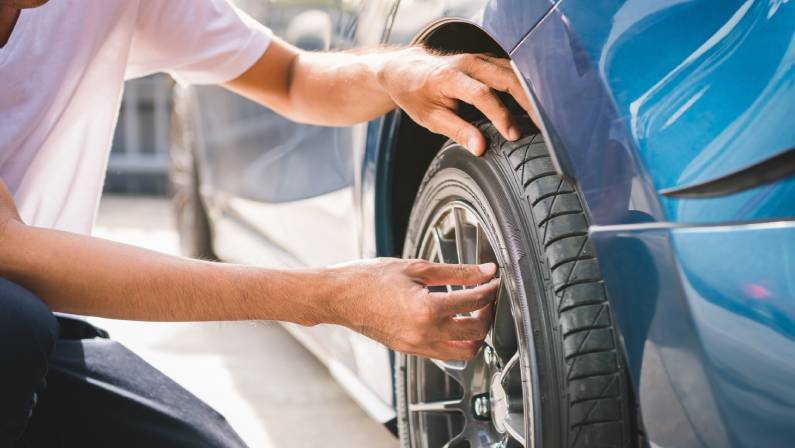
No, you should not self-align your car. While it’s possible to align your own tires, it’s a dangerous job and you shouldn’t trust yourself to do it right. If you don’t know what you’re doing, there’s a good chance that your alignment will be off after the job is done—and this could lead to bigger problems down the road.
You should always leave this kind of work up to a professional mechanic who has experience with the equipment used in modern automobiles. A qualified alignment specialist will have all of the necessary tools and training needed to get your vehicle where it needs to be safely and efficiently.
Keep in Mind
With all this in mind, if you want your car to be safe and reliable, it’s a good idea to have an alignment done regularly. Just make sure that you bring your car to a trusted mechanic who has the right equipment and experience with alignments.
The technicians at Status Automotive & Collision in Houston, TX have been in the vehicle repair business for almost 15 years, so we always give their customers the best service possible. Contact us today!

